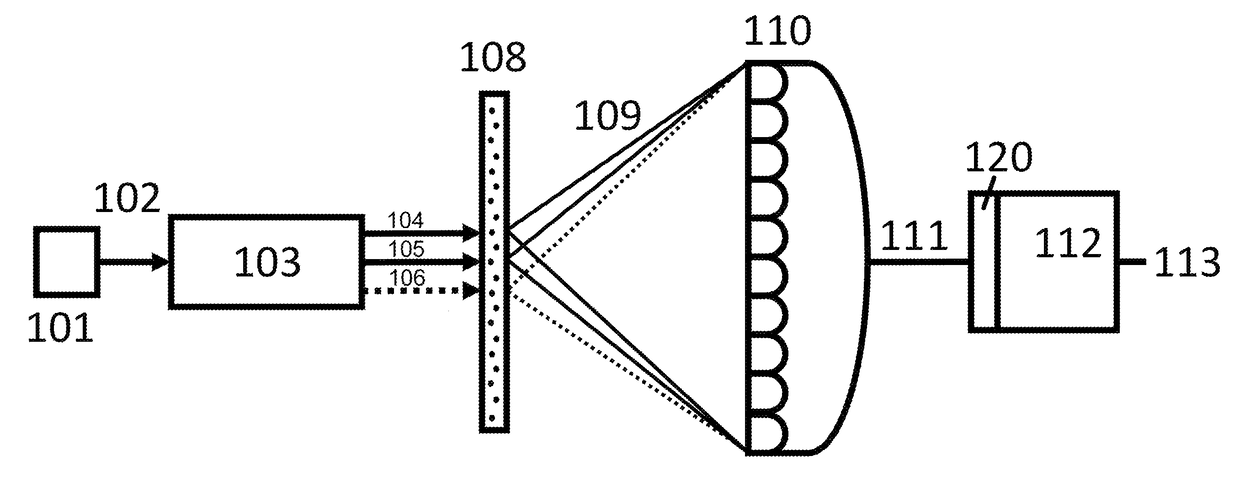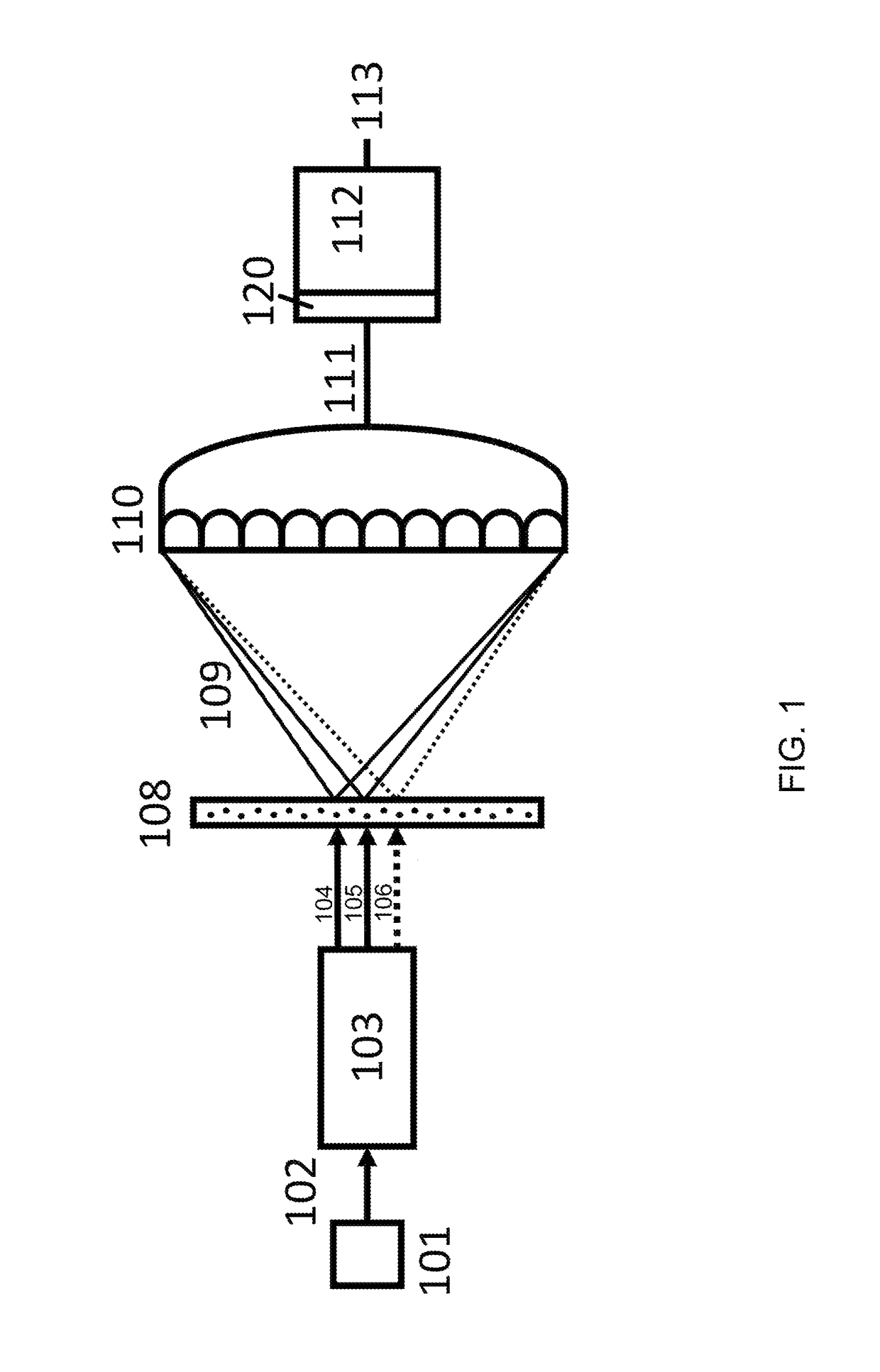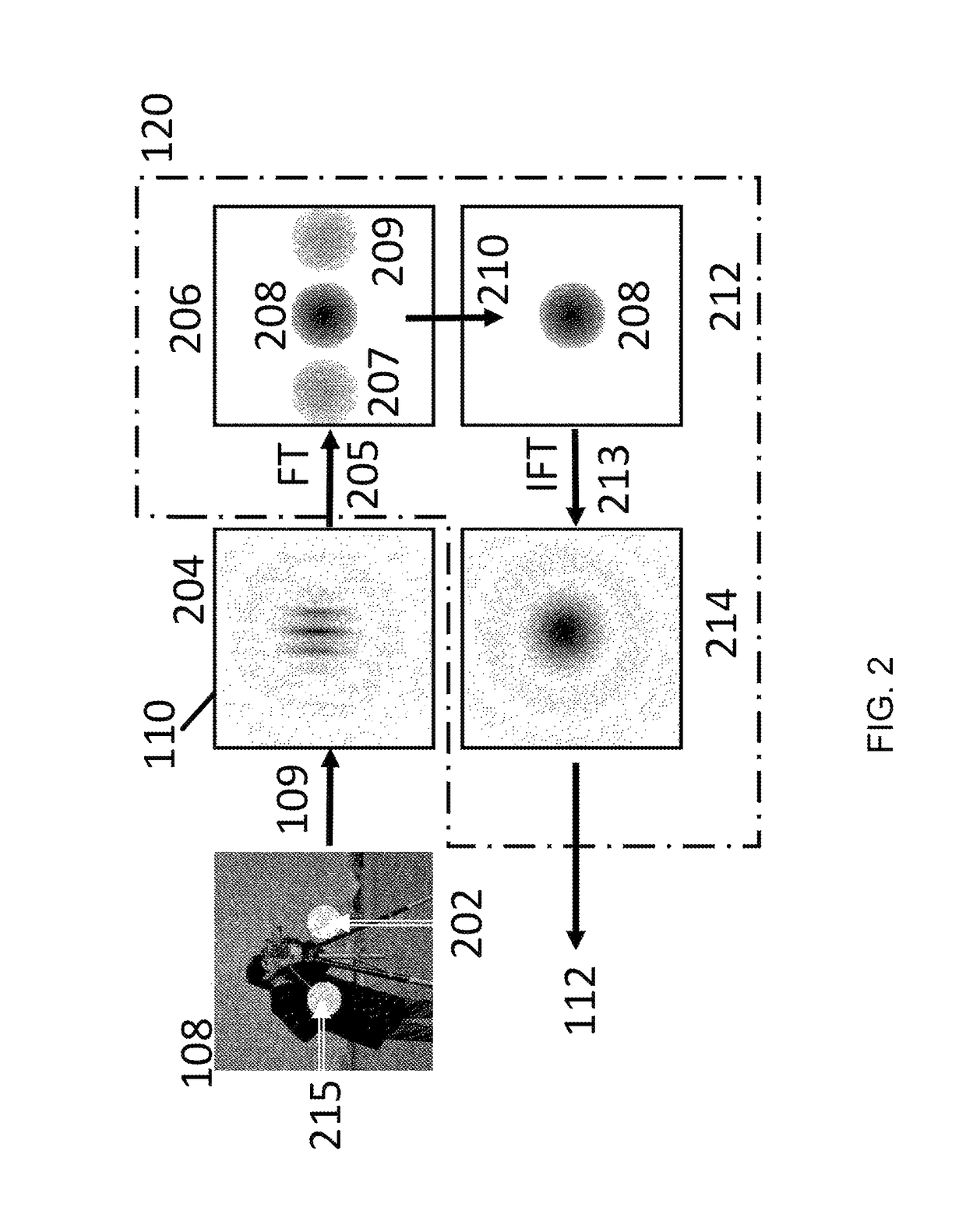Coherent diffractive imaging with spaced-apart beams
a beam and beam technology, applied in the field of coherent diffractive imaging, can solve the problems of spatial non-distinct beams of illuminating radiation and more advanced cdi techniques
- Summary
- Abstract
- Description
- Claims
- Application Information
AI Technical Summary
Benefits of technology
Problems solved by technology
Method used
Image
Examples
Embodiment Construction
[0023]FIG. 1 is a schematic block diagram that depicts coherent diffractive imaging (CDI) using multiple spatially distinct beams. An at least partially coherent source 101 creates a single beam 102 that enters a system 103 to convert it into multiple beams 104,105,106. Those skilled in the art will know that this can be done with a pair of diffraction gratings to spatially separate different wavelength radiation, with a birefringent crystal to separate different polarization radiation, with a pinhole array to generate spatially separate beams of similar properties, etc. Alternatively, an at least partially coherent source generates multiple beams: for example, random lasers. These beams 104-106 are incident on a sample 108. The diffracted waves 109 are measured simultaneously on a pixel detector 110. Simultaneous herein means detected simultaneously (within the acquisition time of the detector). Pixel herein means the smallest area on the detector in which we can make a distinct me...
PUM
 Login to View More
Login to View More Abstract
Description
Claims
Application Information
 Login to View More
Login to View More - R&D
- Intellectual Property
- Life Sciences
- Materials
- Tech Scout
- Unparalleled Data Quality
- Higher Quality Content
- 60% Fewer Hallucinations
Browse by: Latest US Patents, China's latest patents, Technical Efficacy Thesaurus, Application Domain, Technology Topic, Popular Technical Reports.
© 2025 PatSnap. All rights reserved.Legal|Privacy policy|Modern Slavery Act Transparency Statement|Sitemap|About US| Contact US: help@patsnap.com



